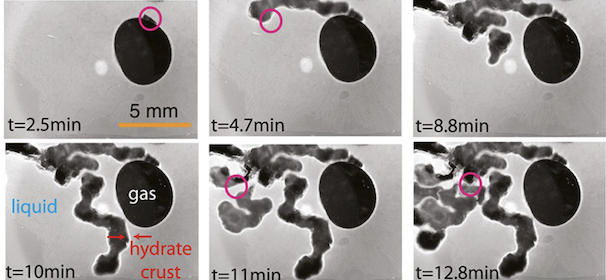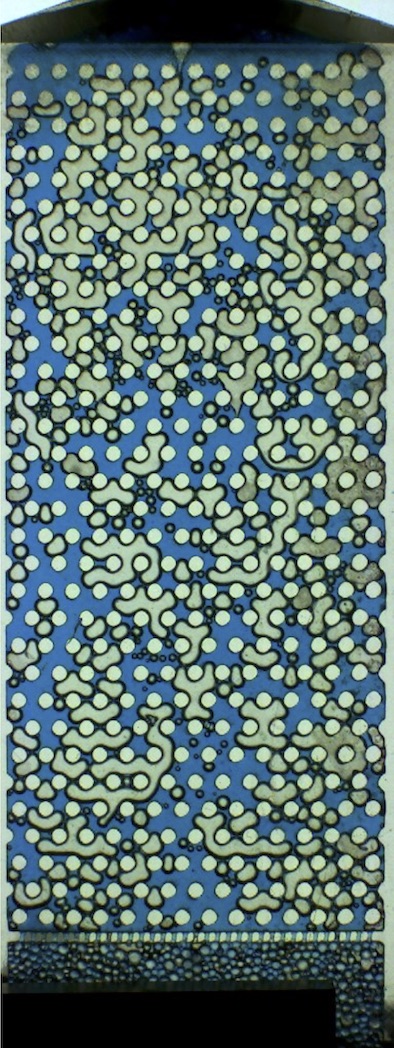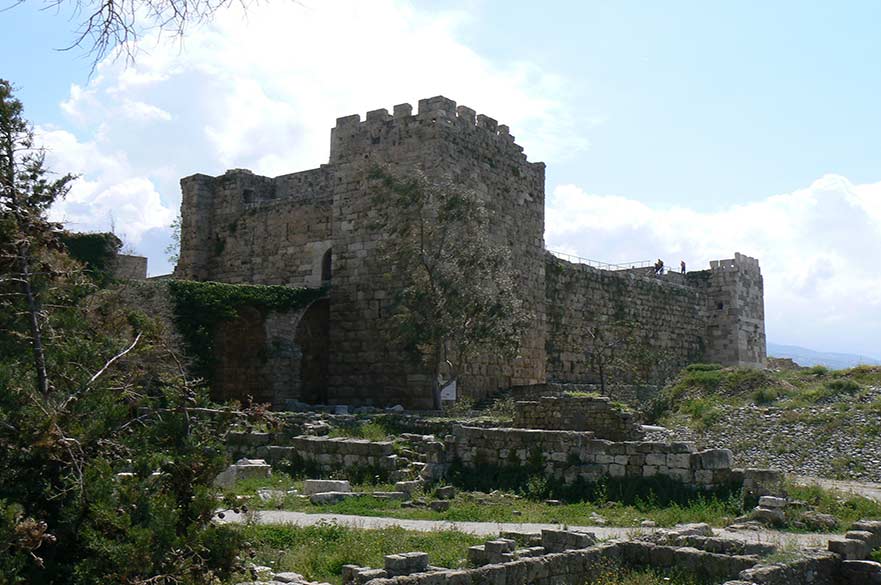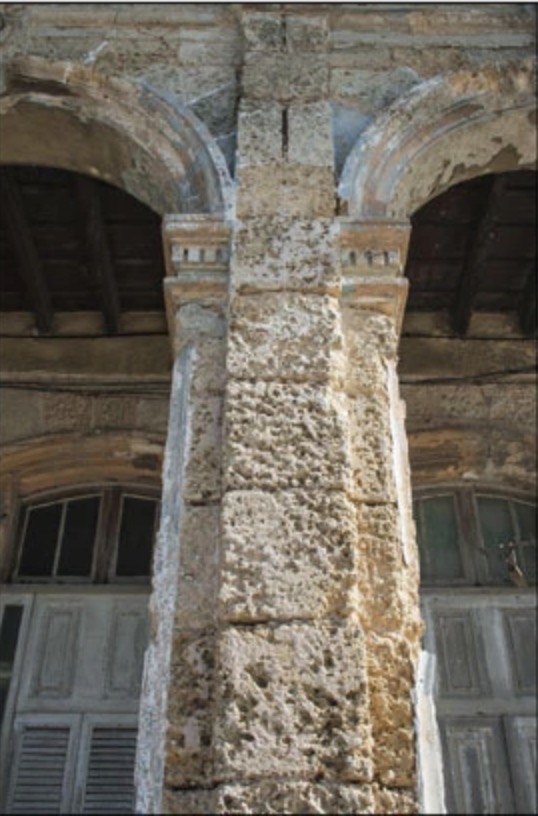Positions
Multiphase flow in responsive media: Hydrate formation in Carbon Geosequestration
Fully-funded PhD (UK, EU & International) --- awarded by Coventry Uni., in collaboration with Nottingham Trent Uni. and the British Geological Survey
This interdisciplinary project aims to improve understanding of the physics underlying hydrate formation in porous media during carbon geosequestration. In this process, liquid CO2 injected for long-term storage into depleted gas fields can generate hydrates as it mixes with groundwater, forming crustal fingers (via the so-called "chemical garden" phenomena). This is a self-arresting process, as the crust slows down the transport and further mixing of CO2 by blocking the pore space.
Under the supervision of Dr. Holtzman (Coventry Uni.), Dr. Goehring (Nottingham Trent Uni., NTU), Dr. Rochelle and Dr. Kilpatrick (British Geological Survey, BGS), the candidate will use cutting-edge numerical and experimental methods to assess the interplay between fluid dynamics and hydrate formation in conditions representative of reservoirs several km deep underground. To gain such understanding, you will develop a predictive model of hydrate formation which resolves the mass and heat transfer including the thermodynamics (phase changes) and the self-arresting mechanism of hydrate crust formation using state of the art computational techniques. You will also spend part of your degree at the Hydrates and Ices Laboratory of the BGS. There, you will develop complementary experiments of hydrate formation under controlled, high-pressure conditions. This involves pumping CO2 into water-saturated porous media, while monitoring pressure and saturation as injection proceeds. MRI (with NTU expertise and equipment) will be used to provide live images of the growing hydrates.
We seek a highly-talented, motivated, and open-minded candidate, with background in physics, fluid mechanics, geosciences, or a related discipline. Experience with laboratory experiments as well as computer simulations is highly desirable. Within this collaborative project, partially funded by the BGS (NERC), part of this PhD will be embedded in Nottingham with the BGS/NTU, exploiting their world-class experimental facilities.
For further details please contact Dr. Holtzman or Dr. Goehring.
Apply here .

Experimental observations of hydrate crust formation and crustal fingering; adapted from: Fu et al., PNAS 2020.
Nonequilibrium flow in disordered media: Memory, hysteresis, and energy dissipation
Fully-funded PhD studenship (UK, EU & International)
Seeking an enthusiastic, curiosity-driven researcher for fully-funded PhD studenship as part of an EPSRC research project. The project aims to uncover the underlying non-equilibrium physics that lead to hysteresis, memory and energy dissipation in disordered media. Non-equilibrium flows play a key role in a large range of applications, from everyday phenomena such as water infiltration into a garden or a stain spreading on a fabric, to applications of huge socioeconomical importance such as water and energy resources.
The project combines computational, analytical and experimental methods, in close collaboration with prof. M. Dentz (IDAEA-CSIC) and prof. J. Ortin (Uni. of Barcelona). We will then use the insights gained from the small-scale investigation towards carbon geosequestration, in collaboration with the British Geological Survey.
For further details please contact Dr. Holtzman at ran.holtzman@coventry.ac.uk.
Apply here .
[CLOSED] Nonequilibrium Multiphase and Reactive Flows in Porous and Granular Materials
EPSRC Postdoctoral Fellowship
EPSRC launched a call for a National 3-year Postdoctoral Fellowships in Fluid Dynamics (NFFDy), see more information and ideas in the NFFDy Hub.
I am seeking an applicant to engage with our Special Interest Group (SIG) on flow, deformation, and reaction patterns in porous media, within EPSRC-funded UK Fluids Network (UKFN).

[FILLED] Salt and Heritage: prediction and remediation of salt-induced damage to cultural heritage
Fully-funded PhD studentship
Our shared cultural heritage comes in many forms and environments, not all of which are conducive to their long-term preservation. For example, salts are inevitably present in porous building materials like masonry, or natural limestone or sandstone walls. The way salts can migrate through these materials poses dangers to cultural heritage such as wall paintings. For example, salts can be drawn along with water and precipitate out in a bloom of salt on the surface (termed ‘efflorescence’), at interfaces (e.g. ‘blistering’ cement), or within a wall (‘subflorescence’). They can also host damaging bacteria that thrive in high levels of salt. Further complexity arises from the sensitivity of many salts naturally present in building materials to minute variations in environmental conditions. For example, sodium sulphate has two hydration states that both occur near room temperature, but which differ in volume by over 300%: the stresses induced by changes between these states suffices to shatter rocks!
In this project, you will develop models of the physical and chemical processes giving rise to salt-induce damage to wall paintings and other cultural heritage. The aim of the work will be to predict when and where salts will appear for several buildings and sites operated by English Heritage, to inform their conservation efforts.
The project will combine numerical modelling with mock-up experiments and detailed observational campaigns at field sites, such as Farleigh Hungerford Castle, Conisborough Castle, Tynemouth Priory and Cleeve Abbey. The modelling approach is inspired by the methods developed to solve similar problems in hydrology, involving mineral transport through soils. Finite element and pore-network models can capture how fluids move and transport material through porous structures, like sandstone. Within this type of model, salts can move with the water, or diffuse on their own, can precipitate out as a solid and generate mechanical stresses.
In designing and adapting such models you will be guided by extensive data on environmental and physical conditions supplied by English Heritage. You will also travel to these sites to map the transport properties, salts distributions, and how they change over the course of your PhD. With your models further tested by lab-based experiments on the expression of salts in similar materials, your aim will be to make confident predictions about the dangers posed to these internationally important sites by salt-based deterioration and help with the design and monitoring of mitigation strategies.
Fully-funded studentship for UK / International candidates, starting: 2022 / 2023. Jointly supervised by Lucas Goehring (NTU), Ran Holtzman (CU), with Haida Liang (NTU) and David Thickett (English Heritage). Apply here (closing in 18 February 2022).
FILLED... Multiphase flows in engineered porous media
Fully-funded PhD (awarded jointly by Coventry + Warwick)
Immiscible, two-phase flow in porous media is of importance to a variety of processes across scales, ranging from catalysis and microfluidics to water and pollutant transport in soils. Our understanding at the continuum (“Darcy”) scale is challenged by its multi-scale nature: the behaviour at the continuum scale is governed by the interplay between microscopic mechanisms such as capillary, viscous and gravitational forces, which is intimately linked to the underlying microstructural heterogeneity. While the continuum models used in academia and industry assume smoothly varied fractions of the fluid components with one phase being well-dispersed, in reality bubbles/droplets of the dispersed phase often merge into large entities whose changing shape/topology and interaction significantly affect the flow. By averaging over a representative elementary volume (REV) the continuum models miss out on important pore-scale mechanisms, which could lead to orders of magnitude errors in estimating fluxes and residence times. The emergence of preferential pathways also implies non-uniform transport of solutes.
This project concerns liquid-liquid and gas-liquid flows in porous media with the accent on statistics of the dispersed phase propagation and its impact on transport of nonreactive solute. To delineate the impact of medium heterogeneity, we consider various degrees of heterogeneity ranging from structured and homogeneous to randomly disordered to spatially-correlated heterogonous samples (e.g. patches or discontinuities). Experimentally, these will be manufactured using Additive Manufacturing (AM), exploiting the state-of-the-art facilities at both institutions. We will compare highly-controlled experiments in quasi-2D and 3D domains with highly-resolved numerical simulations.
This is a co-tutelle PhD studentship which provides the applicant a joint degree from Coventry University and the University of Warwick.
Supervisory team includes Dr. Soroush Abolfath and Dr. Petr Denissenko from the Fluid Dynamics and Multiscale Modelling group in Warwick's from School of Engineering.
We seek a highly-talented, motivated, and open-minded candidate, with background in fluid mechanics, physics, or a related discipline. Experience with laboratory experiments as well as computer simulations is highly desirable.
Start date: May 2021. Funding covers tuition, living expenses, and research-associated travel.

Courtesy of Dr. Petr Denissenko
FILLED... Impact of Soil Hydrophobicity on Flooding and Erosion Hazards
Fully-funded PhD
Water repellency (hydrophobicity) is widespread in natural and agricultural soils. Hydrophobicity increases surface runoff and reduces soil cohesion, therefore promoting flooding and soil erosion. It also promotes the preferential flow of contaminants and nutrients into the groundwater, bypassing the plant root zone. Hydrophobicity and extreme weather have an intricate, two-way connection: hydrophobicity amplifies the consequences of extreme rainfall via flooding and soil erosion, while also being a consequence of global warming because excessive drying, wildfires, and greywater irrigation (due to shortage of freshwater) induce hydrophobicity.
This fully-funded PhD project, aligned with GCRF theme, aims to provide the first proper representation of the underlying physics in watershed models. As such, it will improve our ability to predict and mitigate floods and soil erosion, reducing their impact on communities, agricultural and natural soil and water resources--a subject of increasing attention, e.g. see a recent news item.
This project is highly interdisciplinary, integrating physics and earth sciences with geography.
Supervisory team includes Dr. Marco Van De Wiel from the Centre for Agroecology, Water and Resilience, Dr. Bjornar Sandnes and Professor Stefan Doerr from Swansea University.
We seek a highly-talented, motivated, and open-minded candidate, with background in one or more of these disciplines. Experience with computer simulations as well as laboratory experiments is highly desirable.
Start date: January 2021. Funding covers tuition, living expenses, and research-associated travel.
Postdoctoral fellowships
- Marie Skłodowska-Curie Individual Fellowships
- Royal Society: Newton International Fellowships
- Engineering and Physical Sciences Research Council (EPSRC) Fellowships
- Natural Environment Research Council (NERC) Fellowships
- Royal Academy of Engineering Research Fellowships
- Leverhulme Early Career Fellowships
- Royal Commission for the Exhibition of 1851 Research Fellowships

 From:
From: